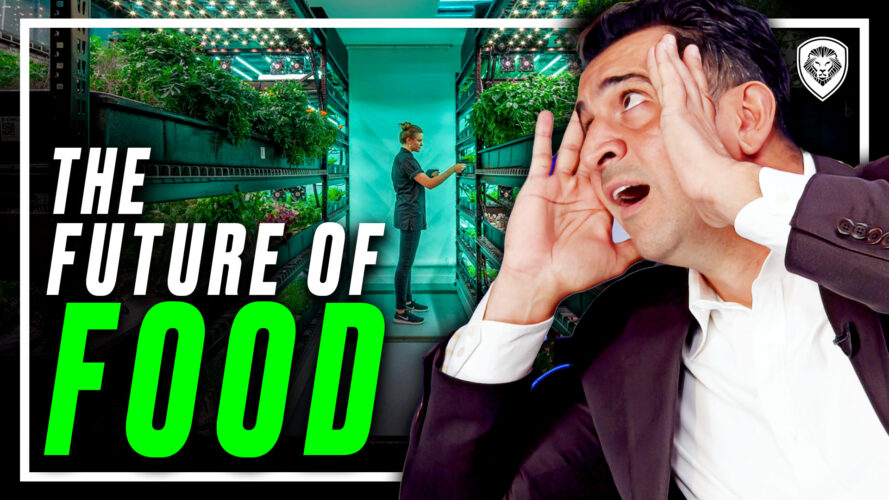Let’s talk about the shortage of food. According to the Economist, in the next 40 years, we will need to produce more food than in the last 10,000 years. So let’s talk about Vertical Farming.
Food production needs to increase by roughly 70% by 2050 to support the expected 10 billion world population. That’s only 27 years from now. Let’s look at some data.
First things first: Arable land. We’ll look at topsoil freshwater supply. We’ll look at the benefits of vertical farming solutions, different types, how they do it, its cost and what different companies are doing today. I want to get your thoughts if this is something we ought to be concerned about and just how much.
- Arable land is land capable of being used to grow crops. Arable land is down 30% since the 1970s. It is expected to drop another 60% from the current number by 2050. That’s 27 years from now.
- Top soil is the primary resource for plants to grow and crops to thrive. Each year, an estimated 24 billion tons of fertile soil are lost due to erosion, which is 25%. Very degraded soil, degraded soil, stable soil and without vegetation. These are some things that people are cinder thinking, saying, we may not be worried about it today, but this could be a big issue for us within the next 27 years.
Some facts about fresh water:
- Agriculture currently uses roughly 70% of the global fresh water supply irrigation.
- Only 1-3% of water on earth is fresh water
- Pesticides, fertilizers and other toxic from chemicals can poison fresh water
- 2% is oceans
- 15% is glacier
- .65% is groundwater, lakes and rivers, soil, moisture and atmosphere.
We now go into traditional farming problems:
- Tillage negatively impacts soil quality. It fractures the soil, disrupts soil structure, accelerates service runoff and soil erosion.
- The government pays farmers to limit crop growth
- Irrigation is highly inefficient
- Unpredictable weather
- Insects
Let’s look at vertical farming: This came about in 1999 when a professor of environmental health sciences from Columbia University and 105 graduate students, were exploring methods to address this problem. They came up with the concept of vertical farming, a multi-story building, grown layers of crops on each floor.
The benefits?
- No soil is required, which alleviates the top soil problem
- Requires 99% less water and fertilizer can grow year round
- No pesticides
- Occupies 99% less space
Three types of vertical farming:
- Hydroponics – where plants grow water or growing medium with nutrients delivered directly to their roots. Hydroponics is the largest segment and account for more than 45% share of vertical farming
- Aeroponics – uses a mist to deliver nutrients to plant fruits
- Aquaphonics – fish are raised, and their waste is used as nutrients for crops. This creates a loop system where the fish feed the plants and the plants feed the fish
The simulated yields revealed that vertical farming could produce 600 times the current world average wheat yield.
One top vertical farming company is Agrico with a revenue of $103 million. Next is Boeing Farming at $83 million freight farms, 72 million aero farms, 22 million. By 2030, this could be a $25-$26 billion industry.
This is where entrepreneurs come in and solve the world’s problems through innovation. That’s vertical farming. This is why I trust in capitalism because there’s an incentive to solve many of the problems we’re dealing with today.
To watch Patrick Bet-David’s full How-To video, click HERE.


















Add comment